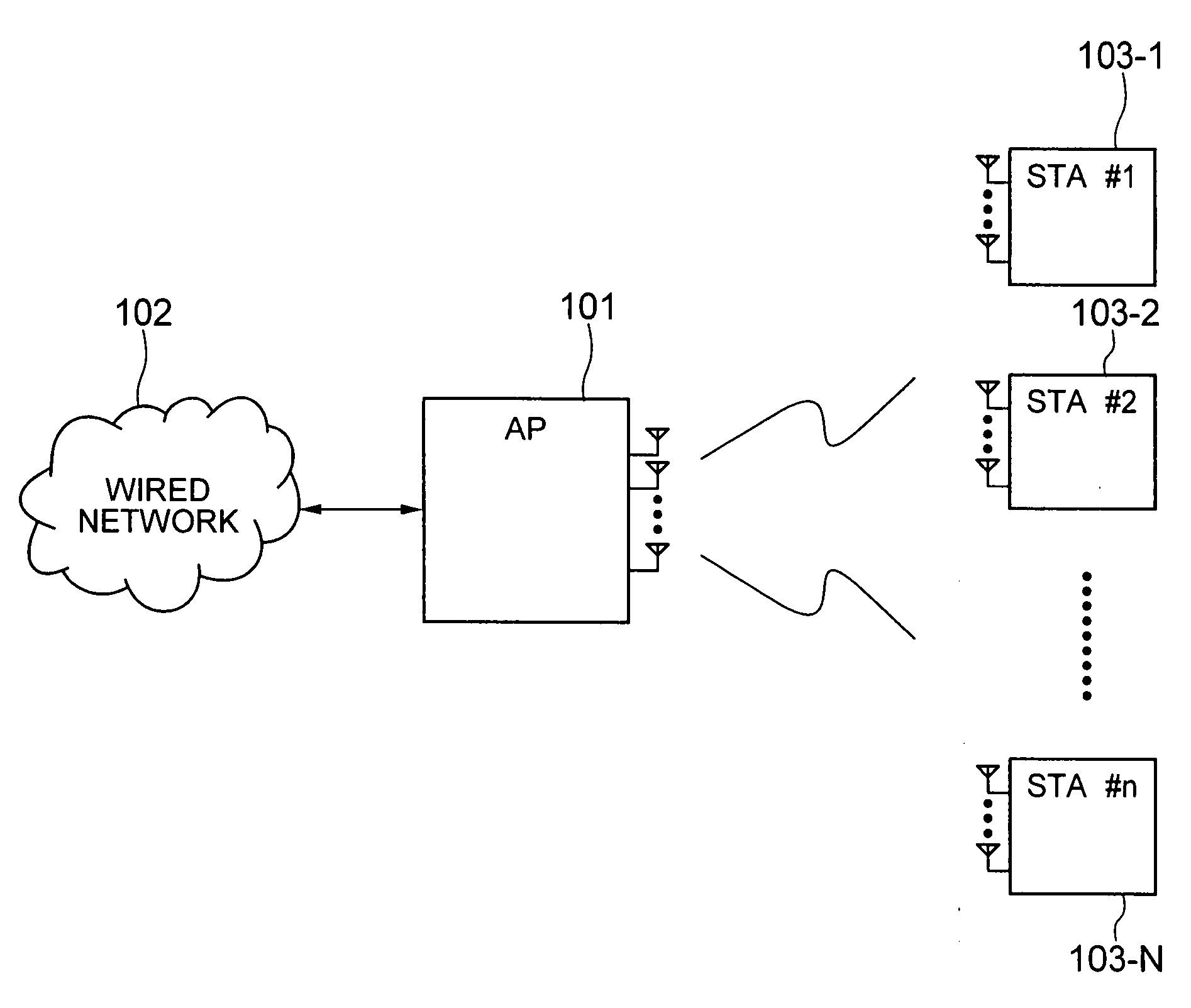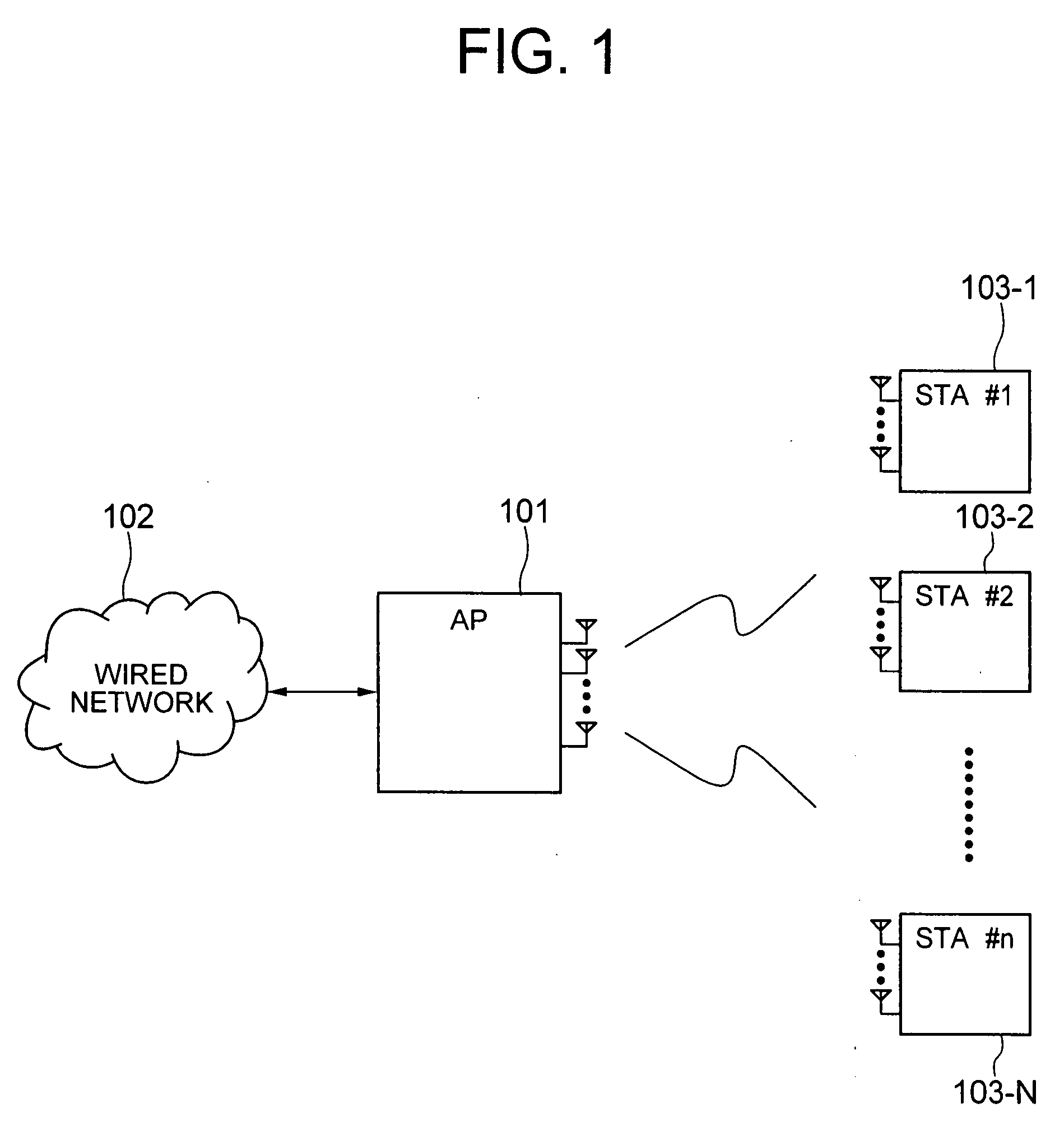Systems and methods for wireless communication
a wireless communication and wireless resource technology, applied in the field of wireless communication systems and methods, can solve the problems of difficult efficient excessive or insufficient allocation of wireless resources, so as to improve the utilization efficiency of wireless resources and communication stability, and the effect of increasing channel capacity
- Summary
- Abstract
- Description
- Claims
- Application Information
AI Technical Summary
Benefits of technology
Problems solved by technology
Method used
Image
Examples
Embodiment Construction
[0028]Referring now to the drawings, description will be given of embodiments of the present invention.
[0029]FIG. 1 shows an outline of a wireless communication system according to an embodiment of the present invention. In FIG. 1, an access point (AP) 101 indicates a base station which includes a plurality of antennas and which is capable of adaptively changing directivity of the antennas. The access point 101 may be connected to a wired network 102. Each of stations (STAs) 103-1 to 103-N includes at least one antenna. If a plurality of antennas are disposed, the station 103 changes directivity of the antennas. When the access point 101 and the station 103 are in a communicable area in which the access point 101 and the station are able to communicate with each other, data is transmitted from the access point 101 to the station 103 (to be referred to as “downlink transmission” hereinbelow) and data is transmitted from the station 103 to the access point 101 (to be referred to as “u...
PUM
 Login to View More
Login to View More Abstract
Description
Claims
Application Information
 Login to View More
Login to View More - R&D
- Intellectual Property
- Life Sciences
- Materials
- Tech Scout
- Unparalleled Data Quality
- Higher Quality Content
- 60% Fewer Hallucinations
Browse by: Latest US Patents, China's latest patents, Technical Efficacy Thesaurus, Application Domain, Technology Topic, Popular Technical Reports.
© 2025 PatSnap. All rights reserved.Legal|Privacy policy|Modern Slavery Act Transparency Statement|Sitemap|About US| Contact US: help@patsnap.com



